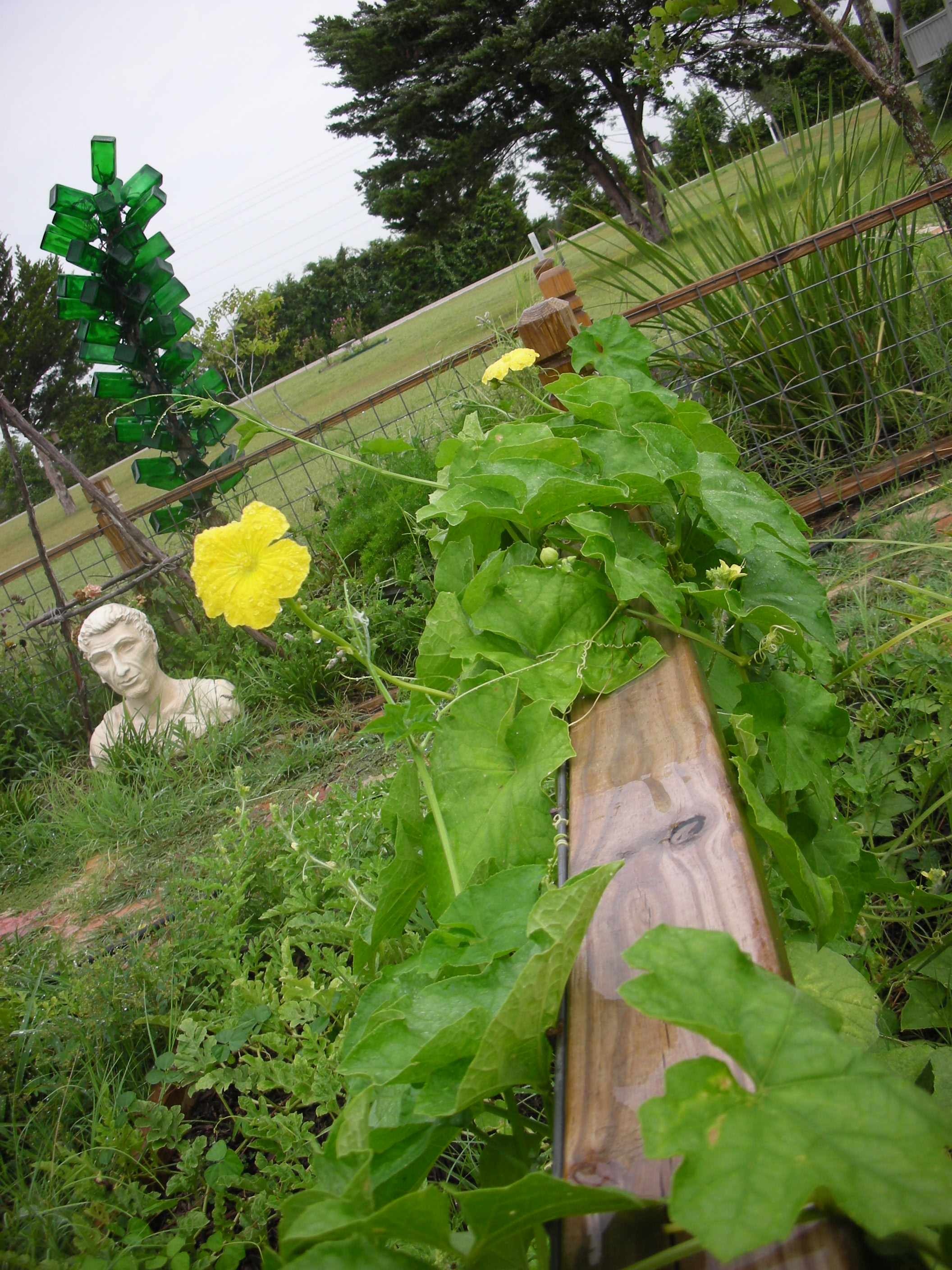I love gourds. I mean I really, really love gourds. I am not sure where my obsession comes from. I know that my earliest plant memories involve gourds. I remember watching them grow beside the road leading to the cattle pens at my Aunt Sarah and Uncle Tom’s farm. I also remember him teaching me to use a 12 gauge shot gun. He would throw some old gourds into the air or float ‘em on the tank and let me shoot until my shoulder hurt. My Aunt Sarah always kept the really big ones. She would drill holes in those and hang them up for the birds. She also kept the “interesting ones”. She would put those in baskets on the table or up on shelves for everyone to admire and marvel at.
I am fairly certain that I have never planted a garden that did not include gourds. I do not understand why more people don’t grow these natural marvels. You can’t kill them. They can grow literally feet in a day. They will cover a fence or a yard with lovely vines bursting with big showy flowers. Kids love them and so do the bees.
I am not particular about what type I grow. I love all of them equally: bottle, kettle, egg, luffa, apple, dipper, or decorative. In fact, there are so many types of gourds I can grow a new variety every year for the rest of my natural life and never get to the end of the varietal list. 
Gourds are members of the Cucurbitaceae family. This family contains most of the vine crops that we crow in the South (or the world for that matter). Melons, gourds, cucumbers, squashes and watermelons are all cucurbits. In fact, there are 125 genra with 960 distinct species. Agriculturally, this is one important plant family. Last year the US produced 4 billion pounds of watermelon alone. That amounts to 15.4 pounds of watermelon consumed by every man woman and child in America.
Now a days gourds are used mostly for decorative and craft purposes. A quick Google query of “gourd art” will bring back pages and pages of truly amazing art being created with gourds. I love making gourd crafts. I have made the obligatory bird house. But, I have made so much more. I have carved them, I have stained them and wood burned them. I have painted them and glued seeds to them. For a while I was so into my gourd crafts that my family bought me a very nice wood burner that they knick named “The Gourd Burner 2000”.
Last year, my wife Sally and I grew luffas. After we harvested them we dried, cleaned and bleached them. We put some seeds in an envelope and attached it to the “bath sponge” with a red ribbon. The luffas were so popular that we ran out and still have a list for next year. This year, we are growing apple and egg gourds. Our kids are going to use the apple gourds for decorative items in their houses. My wife’s second graders will use the egg gourds to make Christmas ornaments and Easter eggs next year.
I feel that gourds are an under appreciated vegetable in the Southern garden. They are easy to grow, attractive and useful. What more can you ask of a plant? I highly recommend that you try running a few of these over one of your garden fences!







